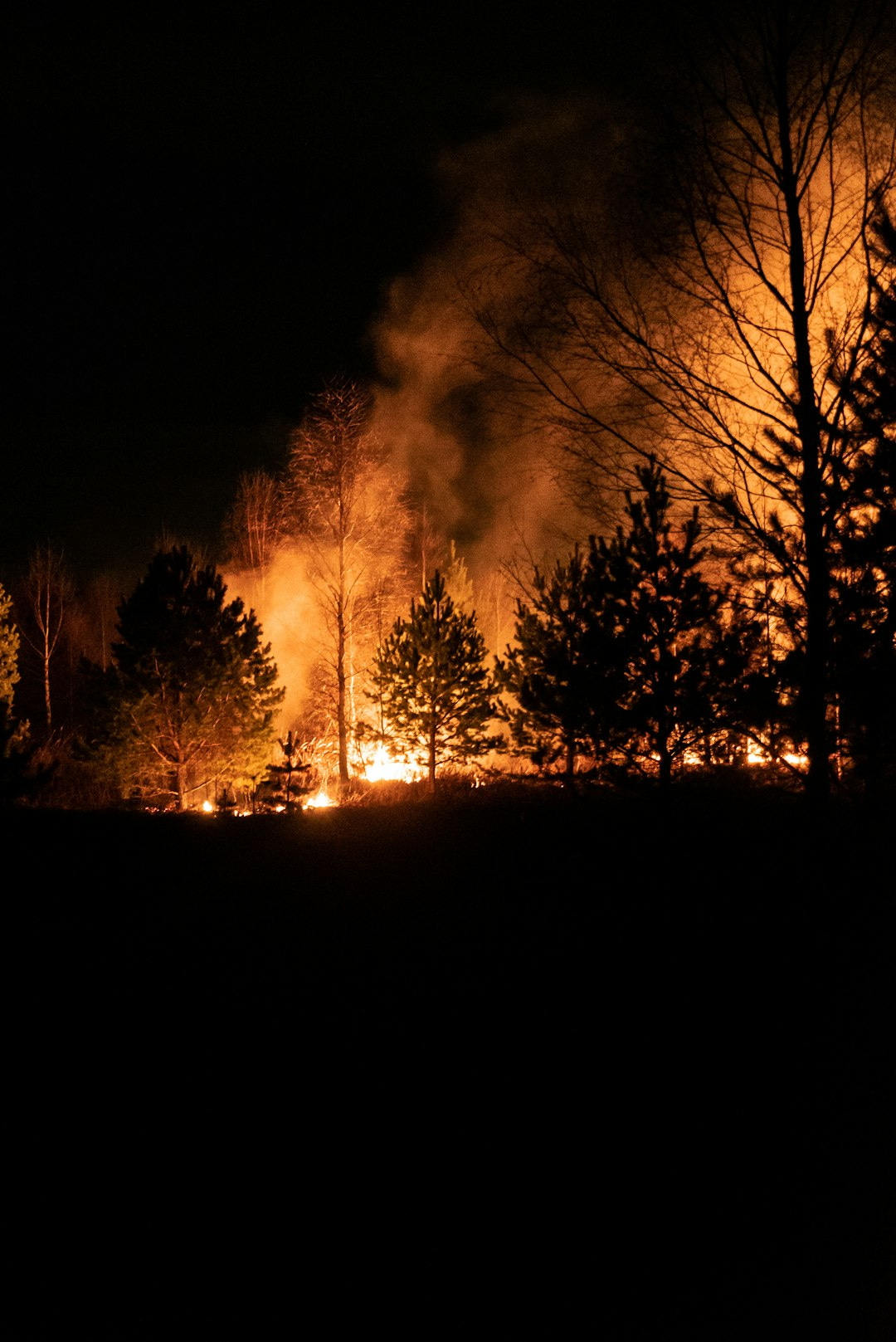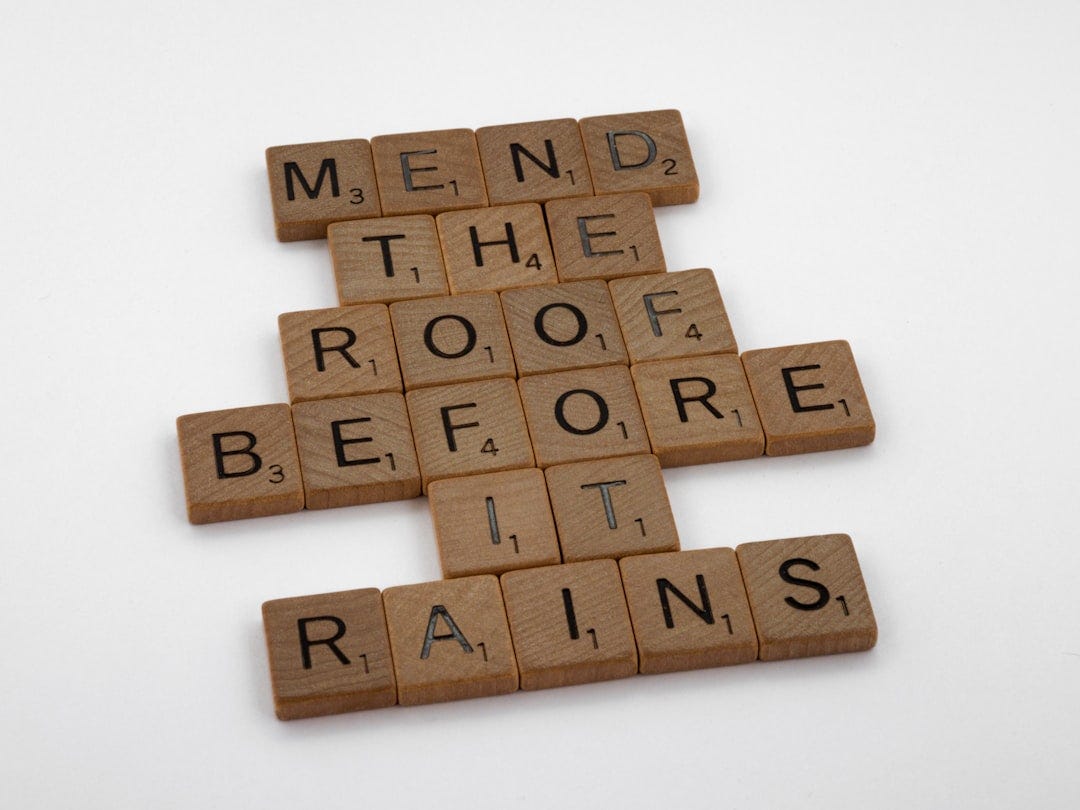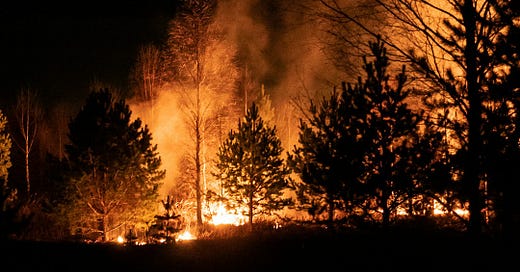The Shifting Tide: Climate Change and Refugee Migration
When disaster destroys your home, what do you do?

In 2021, the Canadian province of British Columbia was decimated by wildfires.
The small town of Lytton was almost entirely wiped off of the map, with most of its buildings rendered down to ash and smoking timbers by the uncontrolled blaze. A month later, another small village over in Monte Lake was forced into an emergency evacuation by another fire.
These wildfires followed on the back end of an extreme heat wave which broke Canadian temperature records. On June 29, just one day prior to the Lytton fire’s ignition, temperatures reached a staggering 49.5 Celsius. For my American readers, that’s about 121 Fahrenheit.
For comparison, the average June temperature in Death Valley is around 44 Celsius, or 111 Fahrenheit. Death Valley, in California, is known for extreme heat in the summer months. It is often thought to be one of the hottest places on Earth.
Prior to the fires, the heat wave itself was bringing immense suffering down on the local population. Across the country, news media was abuzz about the horrific conditions under the heat bubble. There were pictures of people in crisis centers, packing into buildings with air conditioning to be treated by emergency personnel for heat fatigue and dehydration.
With the extreme temperatures, a lingering drought and unpredictable and powerful gusts of wind, there was no way that the local fire departments could control the conflagration once it got started.
As a result of these tragedies, the people of Lytton and Monte Lake found themselves thrust into the spotlight as some of Canada’s most famous Climate Refugees.
With their homes destroyed and their livelihoods gone, they were left stunned and overwhelmed. Their lives were turned entirely upside-down in an instant.
It was as if an apocalypse had descended on a small region of the Western Canadian coast. Nobody was prepared.
All they knew was that they couldn’t stay where they were.
Climate Migration and Refugees
The changing climate and an uptick in natural disasters has led to a rise in migration.
From the wildfires of Lytton to the major flooding in Pakistan, people are being left destitute and lacking in access to shelter, food, and clean drinking water. Their homes and places of work are destroyed, and often the relief efforts are throttled by a lack of warning, damaged infrastructure, and a lack of funds.
Often, the only recourse left to these people is to flee. They pack up what little they are able to salvage, and they move. If they’re fortunate they may have family members elsewhere that are able to give them support.
If they aren’t so lucky, then they’re starting over from nothing.
Often when disasters strike, they cover a wide area. The flooding in Pakistan disrupted the lives of over 33 million people. It ruined sanitation, displacing families from the remnants of their villages, and forced people to drink unfiltered water. Disease ran rampant, and people have continued to die for quite a while after the original event.
Think about Katrina. Think about the devastation of New Orleans in the aftermath of the hurricane. Katrina caused an estimated $97.4 billion to $145.5 billion in damages, and it killed nearly 1,400 people.
As Climate Change worsens and feedback loops compound, severe climate disasters like these are going to become more frequent. They’re going to get worse.
Imagine a Katrina or a Lytton every few months of the summer.
People living along coastlines are going to want to move inland, away from the worst of the devastating storms. People in wildfire country are going to want to find a safer place to raise their children.
A lot of people are on the move, and over the next few years that number isn’t going to shrink. The mass exodus is only going to grow.
And this problem is made even worse by the fact that, as I’ve talked about in previous articles, the people most likely to be affected by this problem are the impoverished. People with money are much, much better able to withstand this kind of emergency- assuming they survive the initial disaster, of course.
But people in poorer communities, often people of color and people with disabilities, they don’t have that financial cushion to help them absorb the costs of starting over.
For people in many marginalized communities, having a strong support system to help them overcome challenges like this is not a given. People with disabilities or mental illness for example do not always have a loving network of friends and family to take them in and help them get back on their feet.
The same can be said of members of the LGBTQ+ community who may be dealing with stigma and discrimination, especially as anti-transgender and homophobic legislation continues to be passed across various countries around the world.
Even just the fact of increasing risk for disaster has a negative impact on those communities. Have you ever taken a look at insurance rates for homes built in places with a high risk of fires? Take a look at the arguments in this short article on the subject.
Disasters to Prepare For

With all of this in mind, it’s impossible not to think about what would happen if your own home was hit. Nobody wants to wind up in this situation, but prevention isn’t always possible- especially now.
The only thing you can do is prepare ahead of time. Most disasters tend to require the same kind of common-sense preparations, things like stocking up on batteries, keeping a generator and storing non-perishable food. Having a way to cook or boil water without electricity is also a great idea. Camping stoves work great in a pinch if you’re able to go outside.
I wrote a little bit about my own experience of surviving a nasty tropical storm- not Katrina, but one that took out my village’s power for nearly two weeks. In it, I give the best advice I could ever give to somebody worried about climate disasters: Mutual Aid saves lives.
In spite of what the sensationalized news media would have you believe, most people are actually pretty cooperative. We’re a social species, we’re naturally empathetic. Our instincts tend to drive us to work together in a crisis.
In preparing for future weather events and danger, having your community on board is deeply important. Who has relevant skills like first aid, or how to safely cut down a damaged tree?
Who has a generator and might be able to help store frozen food and medicines, so it doesn’t go bad? Who has a storm shelter or a basement that might be willing to help shelter people in a tornado warning?
The simple act of getting to know your community and sharing information can make a difference. That can save lives.
On a more individual level, there are things you can do to help be ready for trouble.
Keeping a bug out bag of emergency supplies is always a good idea. Every member of your family should have one. A flashlight, emergency radio, batteries, first aid supplies and medicine, all that stuff. A bag you can quickly grab and carry with you if a call comes in for an urgent evacuation.
For other kinds of disasters, knowing what you’re up against is half the battle. Before the fire in Lytton, they had an incredibly intense heatwave. Understanding that heat waves increase the likelihood for fires will help you plan, but it’s important to keep in mind that the heat wave itself could be dangerous.
Heat stroke isn’t fun. I know, I’ve had it. In bad heatwaves, don’t go outside. Stay hydrated as much as you can and use air conditioning if you have it. If you don’t, then leaning into your body’s natural cooling ability is still possible. Loose light clothing and keeping a fan running can really help.
The real danger is something called Wet Bulb temperature. That’s when things get really dicey.
Wet Bulb temperature refers to the combination of high heat and humidity. See, we cool off by sweating and letting the water evaporate off of our skin, right?
In Wet Bulb conditions, the sweat can’t evaporate because the air is already saturated with moisture. When that happens, you can’t naturally cool off. Wet Bulb temperature is very often lethal, especially for the elderly and the young.
If you don’t have access to air conditioning, or if your power goes out, the best thing you can do is dehumidify the air. Keeping a few large bags of rock salt in storage comes in handy here.
Salt pulls moisture out of the air. Having a few bowls of rock salt set up around your house when the heat wave hits, keeping hydrated and staying downstairs- remember, heat rises- will all help you last a little longer.
Failing all of that, if it’s possible to make it to a building with electricity quickly and safely, do it. Wet Bulb temperatures can kill you in hours. Go ahead and be an awkward loiterer in an office building lobby if it keeps you going.
The Bigger Picture
If you’re one of the lucky ones who hasn’t had to deal with any of this yourself, you can still help others who are.
There are many global charities that do good work to provide assistance for people forced to flee their homes. There’s Climate Refugees founded back in 2015. They’re an independent non-profit working to improve conditions for migrants forced to flee climate catastrophe.
There’s the Climate Displacement Program run by Refugees International, and the UN Refugee Agency has gotten involved in such efforts, too.
Many countries do not yet recognize people fleeing from climate change as official refugees. In my how-to guide for activism, I suggest some ways that people can contact their local and federal governments and request changes to the law.
Bottom line, this is a problem that’s going to get a lot worse. It isn’t one that we’re going to be able to solve quickly, not as long as the world continues on its path of mass destruction in the name of profits.
But while we fight to put an end to that, we also have to remember to keep fighting for each other. I’ve said it before, and I’ll say it again, over and over until everyone believes it.
Solidarity is how we win.


